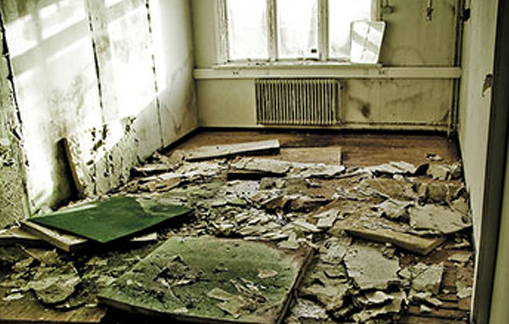Mold Removal

MOLD REMEDIATION IN METRO ATLANTA
Mold and Mildew is an on going problem and some people under estimate the effects on the human body. Mold can cause illness, respiratory problems, and possibly cause dementia. The more exposure to it, the worse the effects are on your body. Take extra precautions for infants, elderly people, and people that have a weak immune system. Get them out of the affected area as soon as possible. This is a serious problem that needs attention now, and XSI Disaster Services, along with our sub-contractor hygienist and remediation team are ready to help you with mold remediation before they escalate into something threatening.
Important information for home and business owners,
BLEACH DOES NOT KILL MOLD!
CHLORINE BLEACH IS INEFFECTIVE FOR THESE REASONS:
- The object to killing mold is to kill its “root’s”. Mold remediation involves the need to disinfect wood and wood based building materials, all of which are porous materials. Chlorine bleach should not be used in mold remediation as confirmed by OSHA’s Mold Remediation/Clean Up Methods Guidelines. The use of bleach as a mold disinfectant is best left to kitchen and bathroom countertops, tubs and shower glass, etc.
- Chlorine Bleach has not been proven effective in killing mold on non-porous surfaces. Bleach itself is 99% water. Water is one of the main contributors of the growth of harmful bacteria and mold. Current situations using bleach experienced regrowth and regenerated mold and bacteria twice the CFU counts than were originally found before bleaching, within a short period of time.
- Chlorine bleach loses its strength by 50% after it’s been on store shelves for over 90 days.
- The ionic structure of bleach prevents chlorine from penetrating into porous materials such as drywall and wood. The chlorine stays on the exterior surface, whereas mold has enzyme roots growing inside the porous construction materials. However, the water content penetrates and actually feeds the mold. This is why after a few days, you might notice darker more concentrated mold growth on the bleached areas.
- Chlorine Bleach accelerates the deterioration of materials and wears down the fibers of porous materials.
- Chlorine Bleach is not registered with the EPA as a disinfectant to kill mold. You can verify this important fact for yourself when you are unable to find an EPA registration number for killing mold on the label of any chlorine bleach.
- Chlorine bleach puts out a gas for a period of time. Chlorine off of the gas can be harmful to humans and animals. It has been known to cause pulmonary embolisms in low resistant and susceptible people.
- Chlorine bleach will evaporate in a short period of time. If the area is not dry when the bleach evaporates, or moisture is still in the contaminated area, you could restart the contamination process immediately and to a greater degree.
- Chlorine is a key component of DIOXIN. One of the earliest findings of dioxin’s toxicity in animals was that it caused birth defects in mice at very low levels. This finding led to dioxin being characterized as “one of the most potent teratogenic environmental agents”. The first evidence that dioxin causes cancer came from several animal studies completed in the late 1970’s DIOXIN is considered to be the “most toxic synthetic chemical known to man.”







